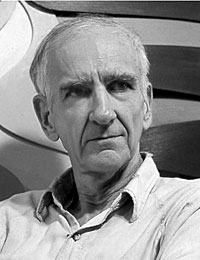Tom Wesselmann
| Tom Wesselmann | |
|---|---|
 |
|
| Born |
February 23, 1931 Cincinnati, Ohio |
| Died | December 17, 2004 (aged 73) New York City |
| Nationality | American |
| Education |
Art Academy of Cincinnati Cooper Union |
| Known for | Painting, Collage, Sculpture, Assemblage |
| Notable work | The Great American Nude |
| Movement | Pop art |
Tom Wesselmann (February 23, 1931 – December 17, 2004) was an American artist associated with the Pop Art movement who worked in painting, collage and sculpture.
Wesselmann was born at Cincinnati.
From 1949 to 1951 he attended college in Ohio; first at Hiram College, and then transferred to major in Psychology at the University of Cincinnati. He was drafted into the US Army in 1952, but spent his service years stateside. During that time he made his first cartoons, and became interested in pursuing a career in cartooning. After his discharge he completed his psychology degree in 1954, whereupon he began to study drawing at the Art Academy of Cincinnati. He achieved some initial success when he sold his first cartoon strips to the magazines 1000 Jokes and True.
Cooper Union accepted him in 1956, and he continued his studies in New York. During a visit to the MoMA he was inspired by the Robert Motherwell painting Elegy to the Spanish Republic: “The first aesthetic experience… He felt a sensation of high visceral excitement in his stomach, and it seemed as though his eyes and stomach were directly connected”.
Wesselmann also admired the work of Willem de Kooning, but he soon rejected action painting: “He realized he had to find his own passion he felt he had to deny to himself all that he loved in de Kooning, and go in as opposite a direction as possible."
For Wesselmann, 1958 was a pivotal year. A landscape painting trip to Cooper Union's Green Camp in rural New Jersey, brought him to the realization that he could pursue painting, rather than cartooning, as a career.
After graduation, Wesselmann became one of the founding members of the Judson Gallery, along with Marc Ratliff and Jim Dine, also from Cincinnati, who had just arrived in New York. He and Ratliff showed a number of small collages in a two-man exhibition at Judson Gallery. He began to teach art at a public school in Brooklyn, and later at the High School of Art and Design.
...
Wikipedia
